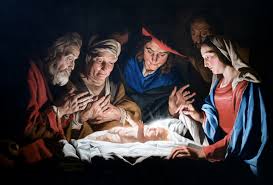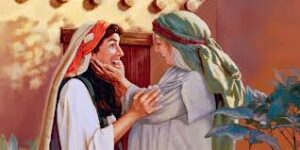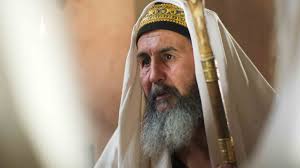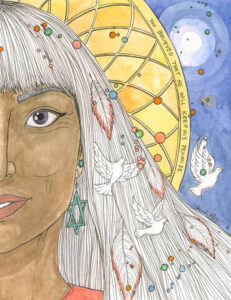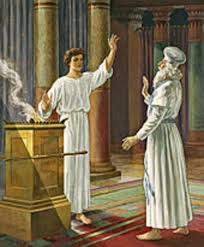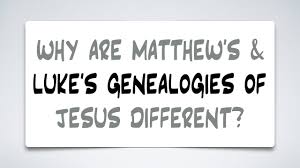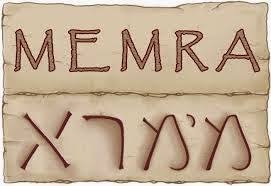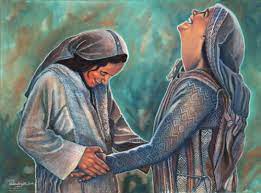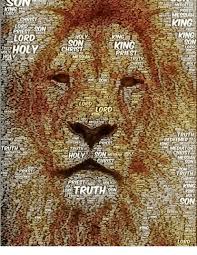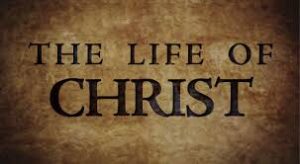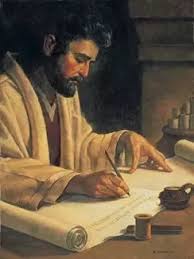An – The Song of Mary Luke 1: 46-56
The Song of Mary
Luke 1: 46-56
The song of Mary DIG: For what does Mary glorify God in this song? What contrasts does she make in verses 51-53? How do these reflect her feelings about ADONAI? About herself? Who are the proud, the rulers and the rich, whose overthrow she celebrates? How will Jesus fulfill the themes of this song? What would a diary from this three-month visit reveal?
REFLECT: Of the attributes of ADONAI celebrated in Mary’s song, which do you appreciate the most? Which challenges you the most? Why? How does your life reflect God’s concern for justice, mercy and deliverance? Would the Lord consider you His humble servant or a proud, rich ruler? Why? If you were to write a song today, what words and phrases would you want to use?
After the angel Gabriel had spoken to her, Mary, or the equivalent of the Hebrew Miryam, had gone to visit her relative Elizabeth. Her secret, scarcely believing it herself, was that she would give birth to the Messiah. When Elizabeth heard Miryam’s greeting, suddenly the baby leaped in her womb, and Elisheva was filled with the Holy Spirit. Consequently, Elizabeth cried out: Blessed are you among women. In other words, the Anointed One’s birth was assured. Mary must have stopped in her tracks. She could hardly believe it. She could not speak. Elizabeth knew! Elizabeth knew the secret! Elizabeth said: As soon as the sound of your greeting reached my ears, the baby in my womb leaped for joy. Blessed is she who has believed that ADONAI would fulfill His promises to her (Luke 1:41-45)! Elizabeth assured Miryam that the message revealed to her by the angel Gabriel would come true. When Elisheva said that, it erased all the doubt from Mary’s mind.
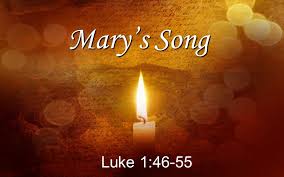
Overjoyed, a wave of jubilation must have filled Mary’s heart. The young girl no longer wondered about her part in God’s will, Elizabeth confirmed it. As she stood before her relative Elisheva, probably arms outstretched, eyes closed with tears streaming down her face, filled with the Holy Spirit she spontaneously sang her song. These verses are known in the western world as the Magnificant, from the section’s first word in the Vulgate, Jerome’s translation of the Bible into Latin around 400 AD.66 This is the first of four songs recorded in Luke, here by Mary in 1:46-66, Zechariah in 1:68-79, a choir of angels in 2:14, and Simeon in 2:29-32.
There are three great thoughts that the song of Mary emphasizes. First, she thanks God for having favored her, a humble maid of Isra’el, in such an extraordinary way (Luke 1:46-50). Mary started by singing: My soul praises the Lord (Luke 1:46; First Samuel 2:1; Psalm 34:2 and 35:9; Isaiah 61:10). It is obvious that Miryam’s young heart and mind were drenched with the Scriptures. She saw herself as part of the godly remnant that had served God. The song does not glorify Mary, but rather glorifies the Lord. She not only included parts of two of Hannah’s prayers (First Samuel 1:11 and 2:1-10), but, also several other references to the Torah, the psalms and the prophets. He is worthy to be praised.
Mary continued: and my spirit rejoices in God my Savior (Lk 1:47; Isa 12:2 and 45:21). Only a sinner needs a Savior. There is no hint in the song that Mary thought the privilege was given to her because she was sinless. However, the Roman Catholic Church teaches that Miryam herself was born without sin, that from the very first moment of her existence she was free from the taint of original sin. It holds that while all the rest of mankind are born into an inheritance of original sin, Mary alone, by a special miracle of God, was exempted.
The original decree, or Holy See, setting forth this doctrine was issued by pope Pius IX, on December 8, 1854. He wrote, “We declare, pronounce and define that the Most Blessed Virgin Mary, at the first instant of her conception was preserved immaculate from all stain of original sin, by the singular grace and privilege of the Omnipotent God, in virtue of the merits of Jesus Christ, the Savior of mankind, and that this doctrine was revealed by God, and therefore must be believed firmly and constantly by all the faithful” (from the papal bull, Ineffabilus Deus, quoted in The Tablet).67
No less than Pope John Paul II declared his total devotion to Mary. He dedicated his whole pontificate to her and had an M for Mary embroidered on all his papal garments. He prayed to her, credited her with saving his life, and even left the care of the Roman Catholic Church to her in his will. Rome has long fostered the worship of Mary and superstition about her is more popular today than it has ever been. So much homage is paid to Mary in Catholic churches around the world that the worship of Christ is often completely overshadowed by the worship of His mother.68
But, the Scriptures clearly state: All have sinned and fall short of the glory of God and that includes Mary (Romans 3:23); For just as sin entered the world through one man, and death through sin, and in this way death came to all men because all have sinned (Romans 5:12); For in Adam all die (First Corinthians 15:22); If we claim to be without sin, we deceive ourselves and the truth is not in us. . . If we claim we have not sinned, we make Him out to be a liar and His word has no place in our lives (First John 1:8-10); There is no one righteous, not even one (Romans 3:10). That should settle once and for all whether or not a believer should pray to Mary. She was a very godly woman to be sure. But she was not sinless. She was only human. So it was necessary for her to be born again of the Ruach Ha’Kodesh and to participate in the redemption provided by her Son.69
Then Mary used the word “for” three times, emphasizing that she was praising ADONAI “because of” what God had done for her. First, she sang: “For” He has been mindful of the humble state of His servant (Luke 1:48a; First Samuel 1:11; Psalm 102:7 and 136:23). The servant was Miryam herself. She was of low estate because, on the economic scale, she was on the poverty level. But, in spite of her low estate financially and living in Nazareth, a town that had a poor reputation, nevertheless, Ha’Shem had looked upon her with grace.70 Mary emphasized her humility, not her exaltation. This was a purposeful decision by ADONAI, and He makes no mistakes. Her child would also share this humble state, who, being in very nature God, did not consider equality with God something to be grasped, but made Himself nothing, taking on the very nature of a servant, being made in human likeness (Philippians 2:6-7).
Secondly, Mary continued to sing, “For” behold, from now on all generations will call me blessed” (Luke 1:48b ESV; Genesis 30:13; Malachi 3:12). She recognized the unique privilege that was being given to her by being the mother of the Messiah, for she saw that all generations would call her blessed. However, Miryam would not be called blessed because of any intrinsic personal worth or holiness on her part, but, because of the child she would bear. We don’t make her a goddess and kneel down before her, but, we do need to call her blessed. It was her glorious privilege to be the mother of the Son of God, to bring Him into the world. We should not minimize it, but neither should we embellish it. She was a wonderful person, and it was no accident that she was chosen by God.71
Thirdly, “For” the Mighty One has done great things for me (Luke 1:49a; Psalm 71:19 and 126:3). As affirmed in Deuteronomy 10:21, God does great things. Whereas in Deuteronomy this refers to God’s having worked His wonders for Isra’el in leading them out of Egypt, here the greatest thing was that she was going to be the mother of the Meshiach, who in His ministry would bring about the events described below.
And holy is His name (Luke 1:49b; First Samuel 2:2; Isaiah 57:15). This is just another way of saying He [God] is holy. Ha’Shem’s holiness here refers not simply to His moral perfection but even more to His acts of righteousness and justice by which He fulfills His covenant promises to Isra’el.72 He provided redemption for His people; He ordained His covenant forever – holy and awesome is His name (Psalm 111:9). As a result, all the veneration of Miryam is to no avail and entirely without any biblical support. In fact, it is completely contrary to what the Bible teaches.
God will show His mercy forever and ever to those who worship and serve Him (Luke 1:50 NCB; Psalm 103:11 and17; Isaiah 51:8). She acknowledged that Isra’el did not deserve this blessing from the LORD. In fact, Isra’el had turned its back on Him. In Deuteronomy 28, ADONAI had warned that if the people walked in disobedience they would be disciplined by subjugation by the Gentiles. At that time Rome dominated Isra’el. But, God had also promised that if the people turned to Him and confessed their sins, He would return to them in blessing. The fact that He had not cut Isra’el off from this blessing after generations of unbelief gave evidence of His patience and mercy.73
God does not save us because of what we’ve done. Only a puny god could be bought with tithes. Only an egotistical god would be impressed with our pain. Only a temperamental god could be satisfied by sacrifices. Only a heartless god would sell salvation to the highest bidder. And, only a great God does for His children what they can’t do for themselves.
ADONAI’s delight is received upon surrender, not awarded upon conquest. The first step to joy is a plea for help, an acknowledgement of moral destitution, and admission of inward insufficiency. Those who taste the LORD’s presence have declared spiritual bankruptcy and are aware of their spiritual crisis. Their pockets are empty. Their options are gone. They have long since stopped demanding justice; they are pleading for mercy.74
Secondly, she praises God for resisting the haughty, the proud, and the self-righteous, and for aiding the poor, the lowly, that is, humble sinners (Luke 1:51-53). Then Mary dwells on the work that her Son will do. She speaks in past tense here, following the expressions of the prophets of the TaNaKh who often use the past tense in describing future events, thereby declaring that what is predicted is as sure as if it were already fulfilled. She continued to sing: He has performed mighty deeds with His arm (Luke 1:51a; Psalm 89:13 and 98:1; Isaiah 52:10). In Isaiah 53:1 the prophet said: Who has believed our message and to whom has the arm of ADONAI been revealed? Then Isaiah immediately begins to reveal the Lamb of God that takes away the sin of the world (John 1:29). The LORD has shown the strength of His arm and revealed His power and love in the salvation He has given to us.75
He has scattered those who are proud in their inmost thoughts (Luke 1:51b; Psalm 89:10; Genesis 8:21). The proud are those who do not fear God (Luke 1:50), who are not hungry (Luke 1:53), or not humble (Luke 1:48 and52). Their inmost thoughts are literally hearts. Luke understood the difference between the humble poor and the proud rich (Luke 6:20-26). Obviously this is not always the case, but frequently the rulers are rich and the humble the oppressed are poor.
God will dethrone all His enemies. He has brought down rulers from their thrones but has lifted up the humble (Luke 1:52; First Samuel 2:6-8; Job 34:24). The rulers are identified with the proud of Luke 1:51 and the rich of Luke 1:53. When Yeshua comes to rule in His new messianic Kingdom, He will turn the world on its head. But many who are first will be last, and the last first (Mark 10:31). Lifting up the humble is most easily seen in the selection of Mary to be the mother of Jesus. He has filled the hungry with good things but has sent the rich away empty (Luke 1:53; First Samuel 2:5; Psalm 72:11-12; Psalm 34:10, 107:9 and 141:6). As is often the case in the TaNaKh, the future acts of ADONAI are viewed as already accomplished.
In Luke 1:52-53 we find an example of chiasmic parallelism in an A-B-b-a fashion.
A He has brought down rulers from their thrones
B but has lifted up the humble
b He has filled the hungry with good things
a but has sent the rich away empty
Thirdly, Mary glorifies the name of God because He fulfills the promises of the Abrahamic Covenant that He made to the nation of Isra’el.76 While God might have removed Isra’el from a place of blessing because of her disobedience, He had remained faithful to His Covenant (see my commentary on Genesis, to see link click Dt –I Will Bless Those Who Bless You and Whoever Curses You I Will Curse). This was the foundation of Israel’s hope and her expectation of the coming Messiah. He has helped His servant Isra’el, remembering to be merciful to Abraham and his descendants forever, just as He promised our ancestors (Luke 1:54-55; Exodus 2:24; Psalm 98:3; Isaiah 44:21; Micah 7:20; Psalm 105:6). The birth-narratives often connect the coming Meshiach with the various Jewish covenants. She acknowledged that her Son would be the One in whom, and through whom, all the blessings that ADONAI promised to Abraham and his descendants would come to her people.
Those who pray to Mary would do well to learn from the example of Miryam’s song. God is the only one lifted up. Notice how she praised His glory and majesty while repeatedly acknowledging her lowliness. She took no credit for anything good in herself. But she praised the LORD for His attributes, naming His power, His mercy, and His holiness. She freely confessed Ha’Shem as the One who had done great things for her, not the other way around. The song is about God’s greatness, His glory, the strength of His arm, and His faithfulness across the generations.
This was not the prayer of one who claimed to be without original sin. On the contrary, it was the prayer of one who knew God as her Savior. She could celebrate the fact that ADONAI’s mercy is on those who fear Him, because she herself feared Him and had received His mercy. And she knew firsthand how the LORD lifts up the humble and fills the hungry with good things, because she herself was a humble sinner who had hungered and thirsted after righteousness, and was filled.77
The two of them most likely embraced and Mary probably knew that the Ruach Ha’Kodesh inspired the words she had just sung. The young girl stayed with Elisheva for about three months. Then her parents probably sent word that she should come home (1:56) and prepare for her wedding. Ah yes . . . the wedding. She was three months pregnant and still not married, though engaged to Joseph. Elizabeth now enjoyed Miriam’s complete confidence and it stands to reason the two of them wondered if Yosef knew about Mary’s pregnancy. It was important that he knew what was about to happen and to understand. She left just before the birth of the forerunner, Yochanan the Baptizer.78



